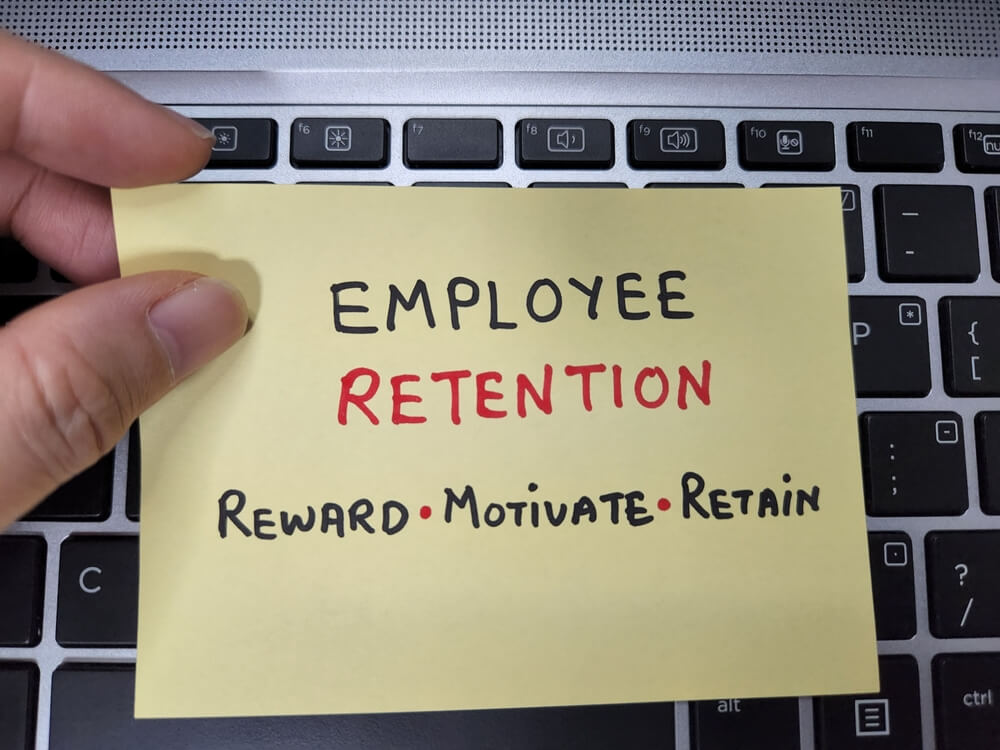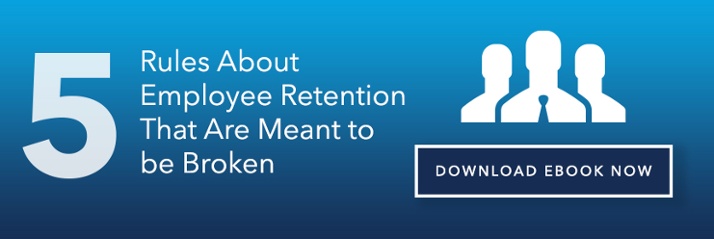Topic Retention
How to Instill Employee Retention into Company Culture

October 6, 2023 | By Questco Companies

Employee retention is the new gold standard for building a successful company. With the massive costs associated with turnover, no business can afford to ignore retention nowadays.
Though many organizations strive for lofty goals like rapid growth or total market domination, having an engaged workforce should be priority number one.
Why?
Because without a solid employee retention strategy, even the most ambitious plans will ultimately falter.
For forward-thinking companies, improving retention starts by examining one of the most influential yet overlooked areas: company culture. An organization's culture - its shared values, assumptions, and behaviors - immensely impacts whether employees feel invested and choose to stay for the long term.
Unfortunately, culture is often viewed as a soft issue compared to profits and strategy. In reality, creating a thriving culture lays the necessary foundation for achieving any business goal.
What is the connection between company culture and employee retention?
A company's culture comprises its shared assumptions, values, and norms. It's the unwritten rules and behaviors that shape the work environment. Culture often starts with an organization's leadership but is reinforced by employees at every level through their actions and attitudes. A strong culture unites teams, provides motivation, and gives the company an identity.
Employee retention refers to an organization's ability to retain its employees over time. Companies with high retention have staff that feel engaged, satisfied, and committed to staying long-term. Conversely, poor retention is characterized by high turnover, lackluster engagement, and workers who leave at the first better opportunity.
Culture directly impacts employees' desire to remain at a company by influencing factors like happiness, fulfillment, work relationships, and sense of belonging. Workers who feel aligned with their organization's culture are more loyal and engaged. On the other hand, a dysfunctional or harmful culture is a one-way ticket to employee burnout and turnover.
What strategies can instill employee retention into company culture?
There are many impactful ways that organizations can shape their culture to boost employee retention. Let's explore some of the most critical areas to focus on:
Leadership and Management - An organization's leadership sets the tone for the company's culture. Executives and managers must model the behaviors they want to see, like transparency, integrity, and collaboration. They should actively solicit feedback and demonstrate that employee concerns matter through meaningful action. Managers, in particular, must be trained to engage and develop team members while providing the resources and support needed to thrive.
Work Environment - The day-to-day atmosphere greatly affects fulfillment and happiness. A positive environment is psychologically safe, empowering, and stimulating. Companies can promote work-life balance through policies like remote work, parental leave, and flexible schedules. Even small perks like office snacks or casual dress codes show that the company cares.
Career Development - Employees want a future at the companies they stay with. Providing training, mentorship, and clear paths for advancement gives workers motivation to grow their skills and move up. Rotation programs, workshops, and continued learning demonstrate the company's investment in employees.
Feedback and Adaptation - Company culture should evolve based on internal and external changes. Performing assessments, gathering data, and reviewing exit interviews paints a picture. Regular pulse surveys provide insights into how employees feel and where gaps may exist. Equally important is creating a culture of agility, not complacency. As needs arise, retainment strategies should adapt. Treating feedback as a gift and taking action demonstrates a willingness to improve.
Retention requires constantly evolving, and employees will take note of progress.
Next, let's shift gears to discuss some tips for implementing retention-focused cultural initiatives successfully.
What are best practices for a retention-focused culture?
Implementing cultural initiatives to boost retention takes forethought and commitment but is entirely achievable. Here are some tips for getting started:

Begin with a pilot program - Introduce changes in a limited scope to work out any kinks. For example, launch a career development program in one department before expanding company-wide. Learnings from smaller tests inform a smoother company-wide rollout.
Involve employees early - Ask staff to share their retention pain points right away. Engage cross-functional focus groups to help shape programs based on actual needs. Employee collaboration results in the best ideas.
Set measurable goals - Set clear KPIs for retention programs rather than vague directives. Reducing turnover by x% annually or boosting engagement scores by x amount keeps efforts targeted. Share results openly.
Communicate repeatedly - Keep retention in mind by communicating programs frequently through multiple channels: email, newsletters, events, signage. Consistent messaging ensures awareness and adoption.
Ensure leadership buy-in - Get executives and managers on board early for large-scale changes. Their visible support lends credibility. Have them model desired behaviors first.
Incentivize participation - Offer small rewards for participating in new programs, from gift cards for completing surveys to points for attending training sessions. Incentives drive engagement.
Partner with other departments - HR can't go it alone. Collaborate cross-functionally with groups like Communications, Facilities, and IT to align efforts.
Track participation metrics - Measure adoption rates for programs in addition to engagement surveys. Low participation indicates poor awareness or interest.
Reinforce regularly - Continuously reference retention programs in corporate communications to keep the momentum going. Refreshing keeps initiatives feeling current rather than one-off.
Celebrate wins - When milestones are hit, like reduced turnover or program engagement, celebrate openly. Highlight successes to keep motivation strong.
Adjust as needed - Examine data frequently and solicit feedback on programs. Make iterations to evolve programs based on what’s working and what’s not.
Where Do You Go From Here?
As we've explored, culture and retainment have a robust and interlinked relationship. When employees feel fulfilled, supported, and invested in their company's future success, turnover becomes non-existent.
By shaping culture intentionally through leadership, work environment, career development, recognition, and more, organizations can reap the benefits of retention: consistency, stability, knowledge retention, cost savings, and sustained growth.
While culture may seem ambiguous or slow to evolve, the collective impact of small changes is immense. The first step is starting the retention conversation and focusing on a positive, engaging culture.
By making retainment a true priority today, any company can become an employer of choice that attracts and retains top talent for generations to come.




